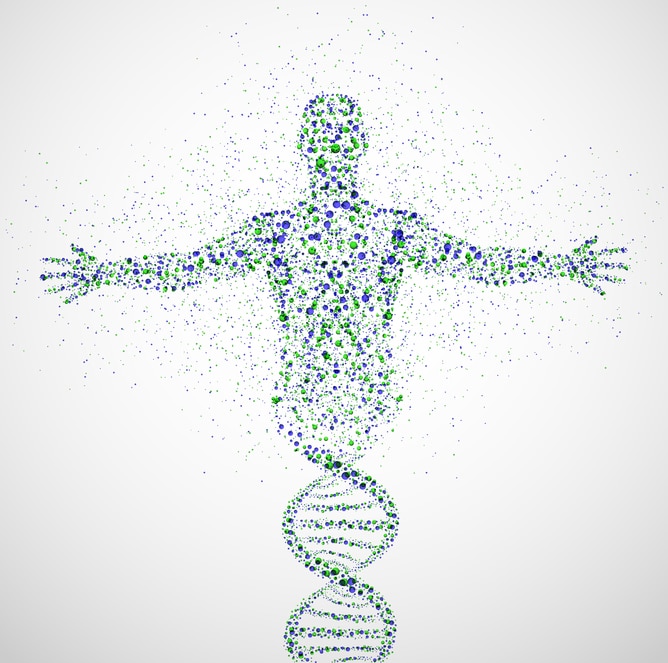DNA is the insanely complex code of instructional information that is the basis of life. We have it in every cell of our bodies and so does every other organism on the planet. Deoxyribonucleic acid is a molecular, double helix structure that stores the plans for traits, processes, functions, and the instructions needed to regulate all of the above. What does DNA and the genes represent by its ladder-like rungs tell us about evolution?
I wrote about evidence and how evolution has much of it in a previous article entitled, Evolution has a Mountain of Evidence. Biologists have been communicating to the public that genetic research has added to the ever growing mountain of evolutionary evidence, of which it has, but what does the data show us? Of course we all know (or should know) that pseudoscience is about looking for evidence to support what we believe, yet science is about gaining empirical data through observation and experimentation of which can be repeated and verified by others. So, what does genetic research have to say about common ancestry?
Before any comparisons can be made, one must first understand how the information is stored/contained in a genome/DNA. The first and most noticeable structures are chromosomes. These structures categorize and house the varying number of strands of DNA. In sexually reproductive organisms, the sex genes are housed in their own chromosome(s). The number of chromosomes an organism has is very important in determining what traits it will have. A second notable aspect of an organism’s genome has to do with coding and noncoding sequences. Proteins and how they function are at the heart of the information contained in DNA. So, when a sequence is referred to as a coding sequence, geneticists are referring to its ability to create functional proteins. Noncoding sequences are highly functional in regulatory capacities. A third aspect of DNA has to do with the computer-like information stored in base pairs. Now that I have mentioned three aspects of DNA, I will cover the first in this post and the other two in subsequent posts.
 |
| Coyote – 78 Chromosomes |
 |
| Chicken – 78 Chromosomes |
Is the data offered in regard to organisms’ relationships and common ancestry straightforward? Humans’ possession of 46 chromosomes and chimpanzees’ possession of 48 may seem to be a trivial discrepancy, yet the detailed information in chromosomes is so drastic that many organisms with the same number of chromosomes are of extremely different species. The coyote and the chicken both possess 78 chromosomes, so are relational comparisons being made because of this? Extreme difference in species is reflected with organisms that share the same number of chromosomes with chimpanzees. Although no evolutionary biologist is claiming that deer mice and the tobacco plant are close relatives, they do share the same number of 48 chromosomes with the chimpanzee. Information housed in the varying number of chromosomes an organism has is so diverse, should we not question relational ties between humans and chimpanzees with a two chromosome discrepancy? What data revealed by the quantity of an organism’s chromosomes is evident evidence of humans’ common ancestry with chimpanzees? What observations and experiments have been repeated and verified that shows this evidence to actually be empirical data? In my book, What Is Evolution?, I dive deep into this subject and ask many more questions, like why would a “lower” life form like a chicken have a greater number of chromosomes than a “higher” life form like a human?





